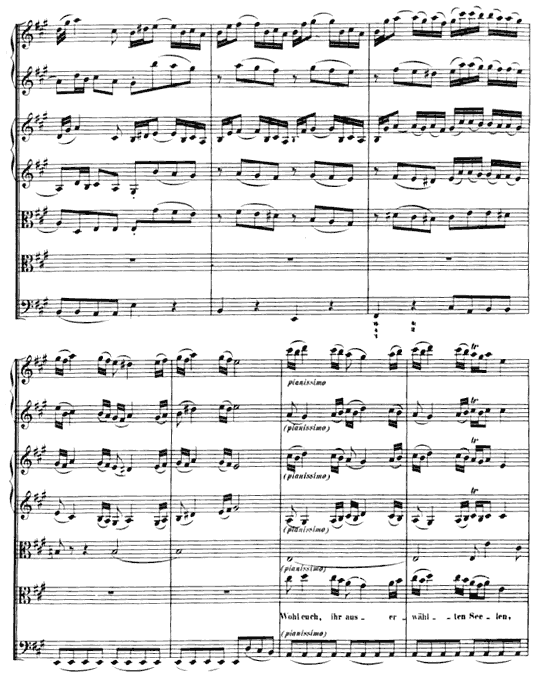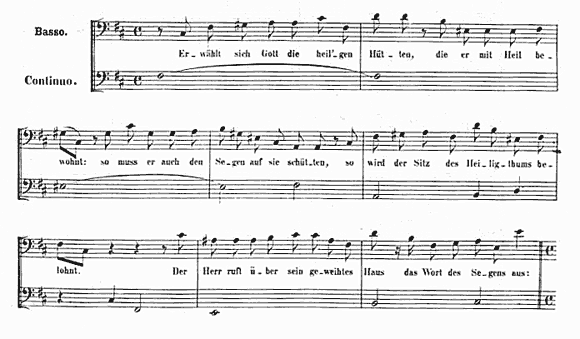This work was derived from a wedding cantata of early 1726 (BWV 34a, same title, longer, in two parts). As it was reworked, the cantata was intended for Pentecost Sunday (Whitsunday), perhaps in 1735 or 1736. The librettist is unknown, though some believe it may have been Christian Weiss, Jr., who is thought to have been a clergyman in Leipzig. Regardless, the text is clearly derived from the Gospel of John 14:23-31. There are several connections between this work and Cantata 74, Wer mich liebet.
- Both were composed for Pentecost
- Both use reworked material (not uncommon for Bach)
- The final movement of Cantata 74 and the first movement of Cantata 34 are both exactly 244 measures in length, which might be a coincidence. But the number 244 is indeed relevant in Cantata 74 (see below).
The opening movement is brilliant, written in a bright D major, with trumpets, oboes, and timpani helping to create a festive feeling. The 3/4 meter may reflect the Trinity, but its dance-like quality further enhances the joyous character. The rapid violin lines may indeed be “fiery”, as the text implies; melismas of various lengths are placed on the word “Feuer” (fire) in the choral parts, perhaps reflecting the tongues of fire seen spreading among the disciples at the first Pentecost. Interestingly, Bach sets this first movement in da capo form, something we normally associate with arias rather than choral movements.
After a short secco recitative for tenor we find a lengthy aria. This alto aria is a striking contrast to the opening movement in its gentle, restful sound. The trumpets, oboes, and timpani are omitted in favor of the much softer sounds of flutes and muted strings. Although written in 4/4, the syncopated phrasing creates a pastoral feeling similar to the effect of a compound-meter setting (such as 12/8). The rocking motion helps promote the gentle feeling, while the rising sequence promotes the idea of reaching towards heaven. The peacefulness directly reflects the text:
| Wohl euch, ihr auserwählten Seelen, die Gott zur Wohnug ausersehn. Wer kann ein größer Heil erwählen? |
Happy are ye, ye chosen souls, elected of God to be His dwelling. Who could choose a greater blessing? |

The parts in the score above from top to bottom: flute I, flute II, violin I, violin II, viola, alto, continuo.
Another brief secco recitative, this one for bass, follows, which leads abruptly into the final movement for chorus. The recitative, in fact, ends on a half cadence, with an octave leap upward in the voice. Immediately, the chorus shouts triumphantly “Peace upon Israel!” (Friede über Israel!) The recitative is shown below:

The fifth movement’s cry of rejoicing might be linked to hopes of Saxony in the Second Silesian War of 1744 or 45, which of course would lend credence to the later composition date (1746). The entire affect of this movement is one of joy and triumph. Malcolm Boyd writes that this is a “jubilant movement in two sections, in each of which thanksgiving to God is expressed first by the orchestra alone (with, once again, trumpets and drums to the fore) and then by voices and instruments together” (Oxford Composer Companions, J.S. Bach).


































